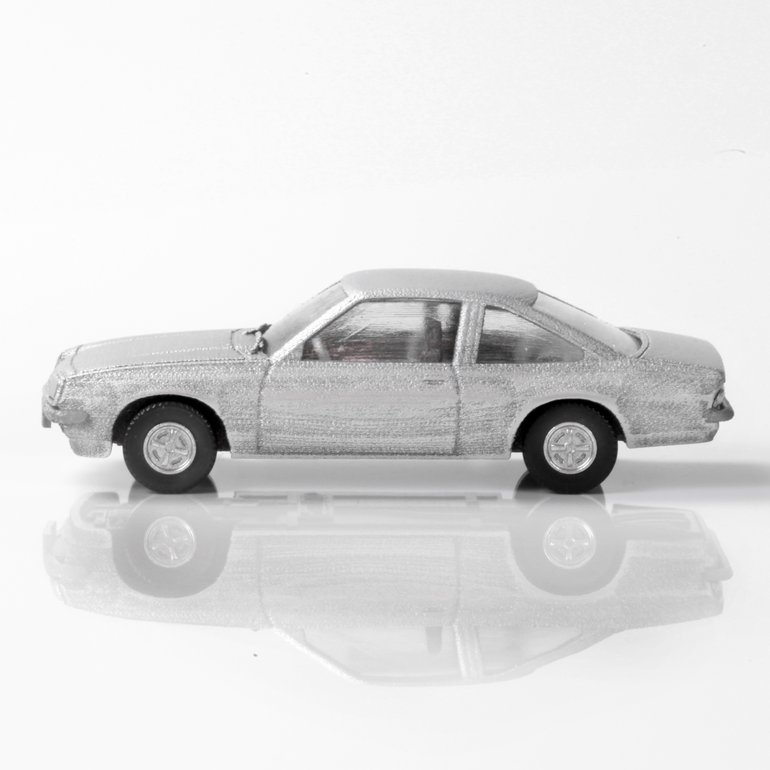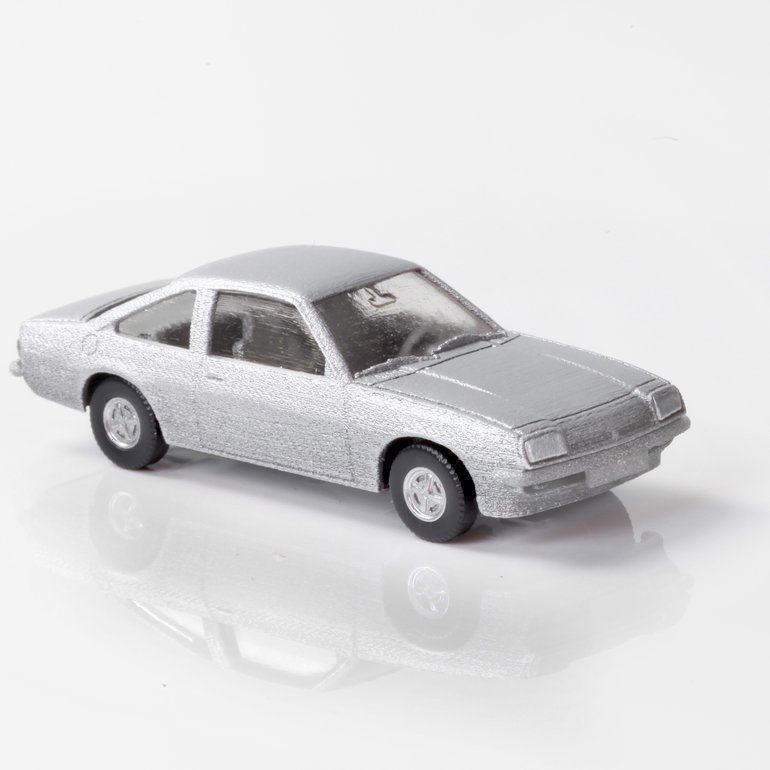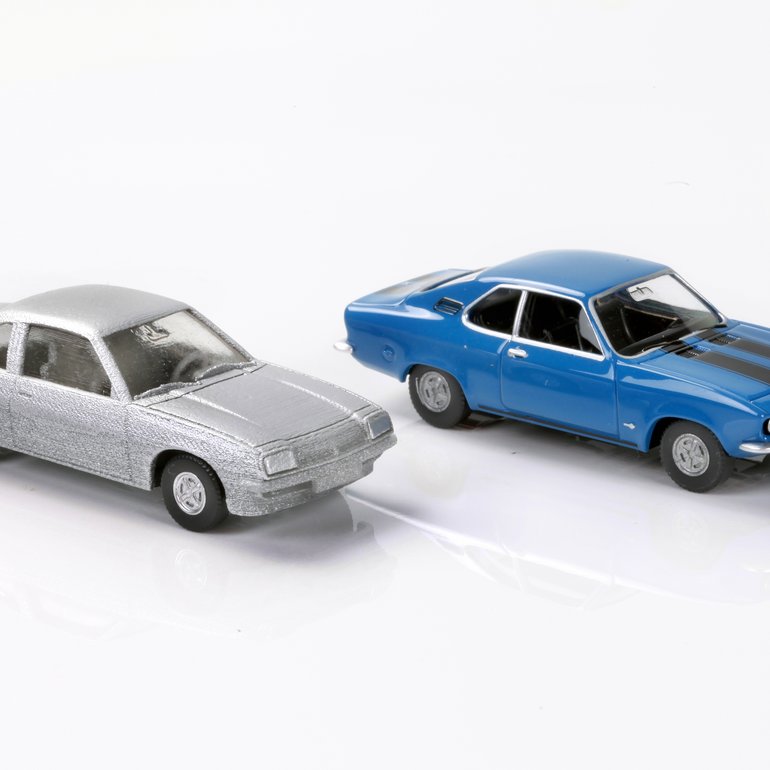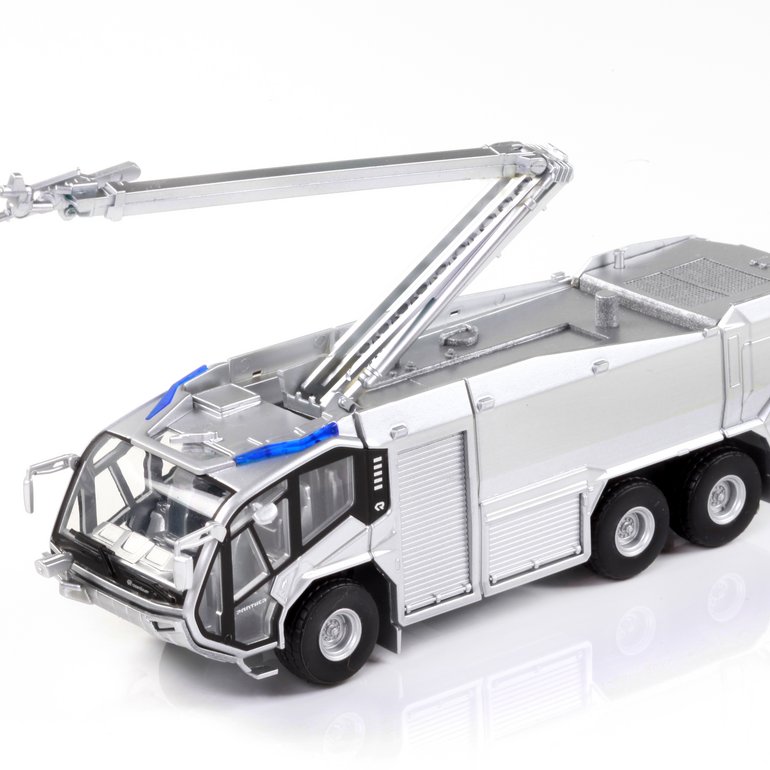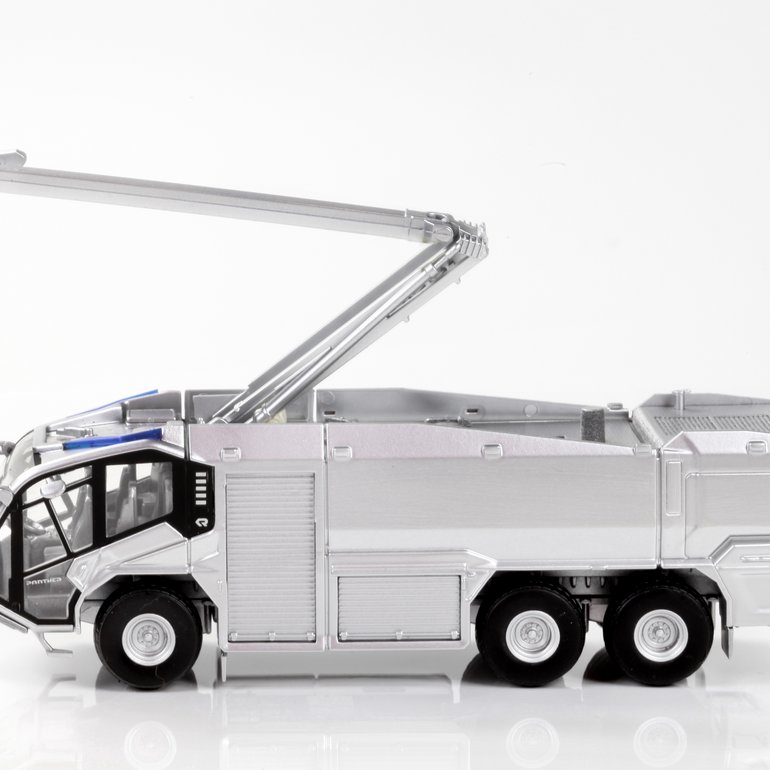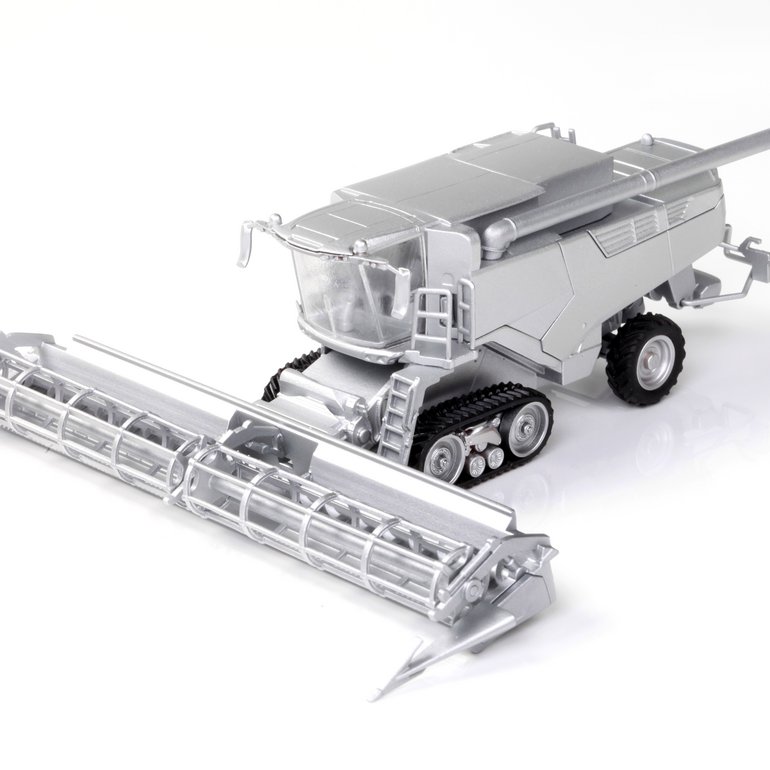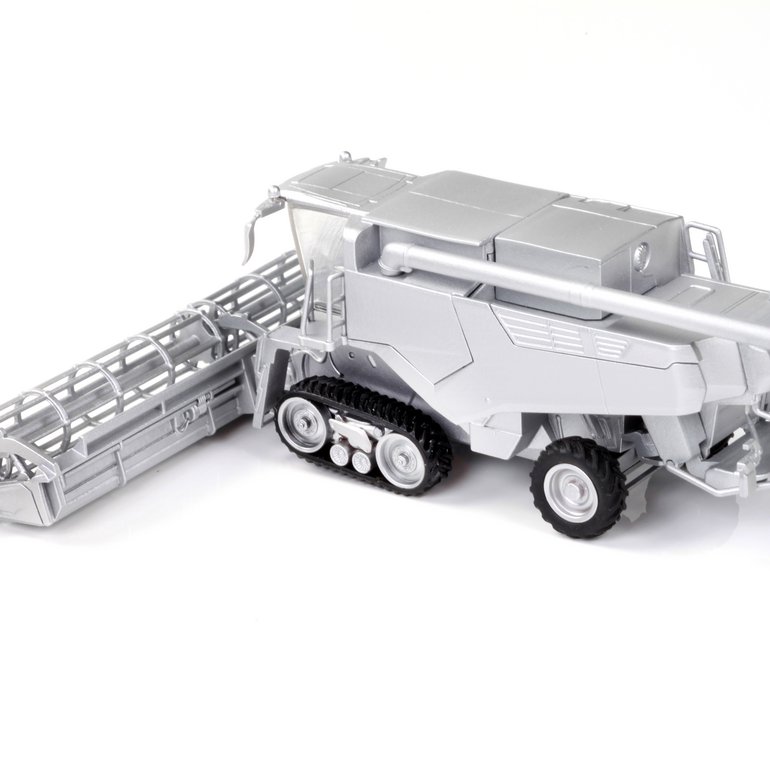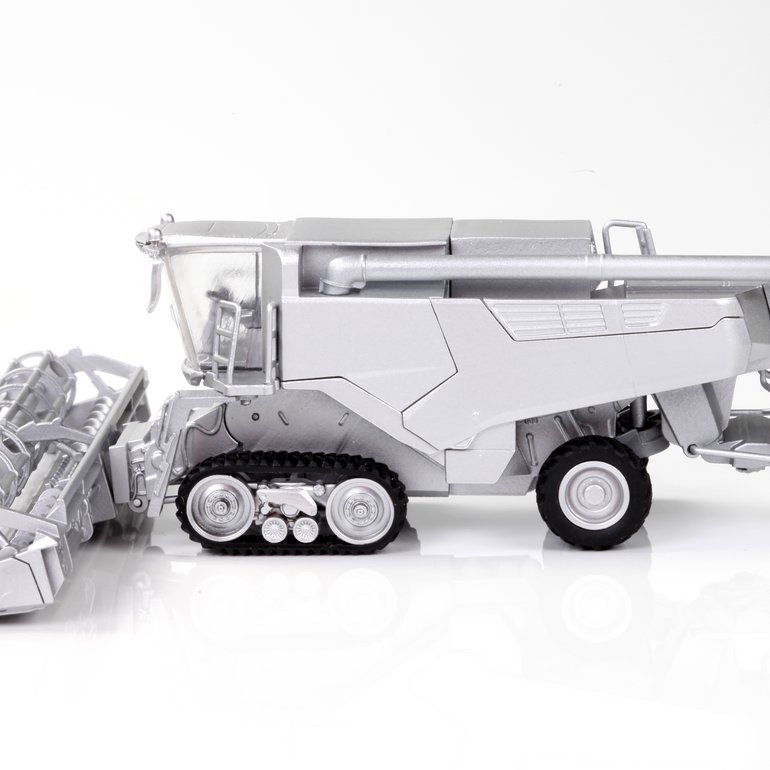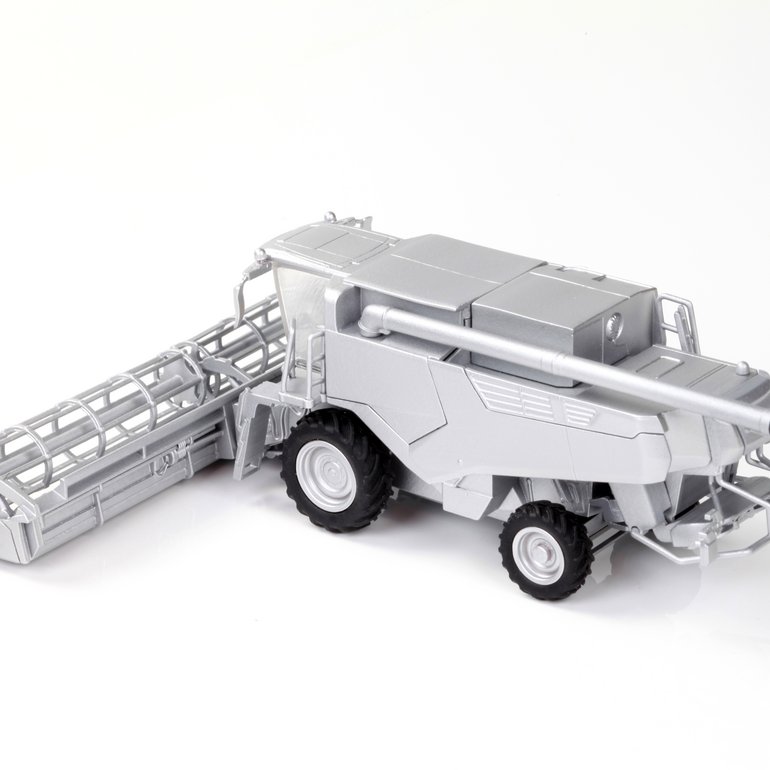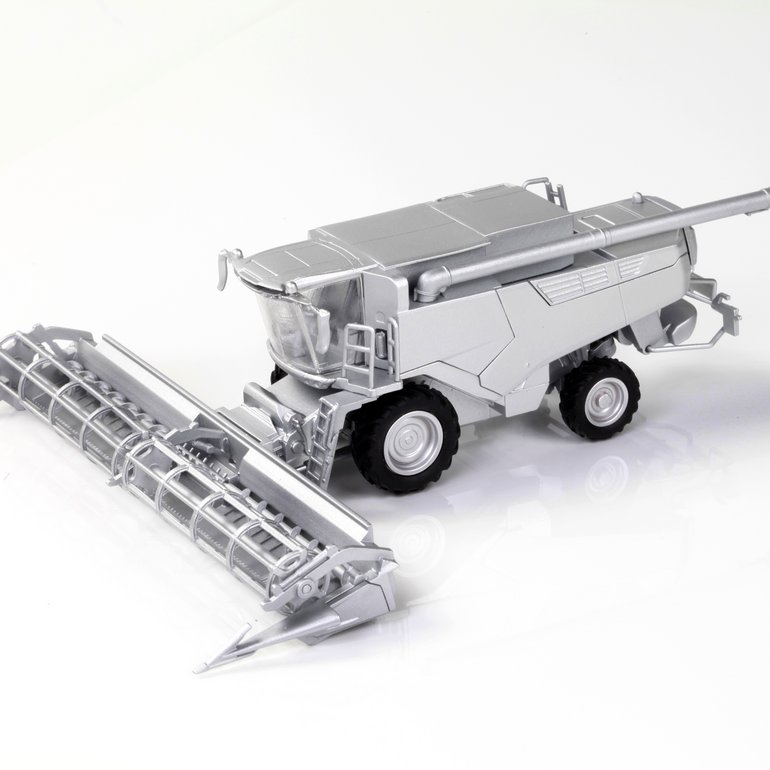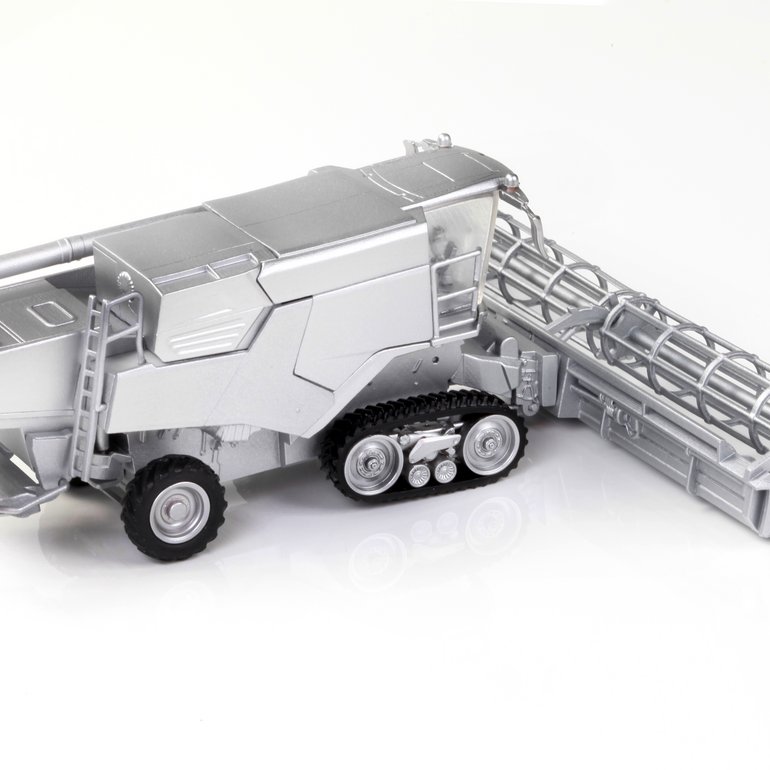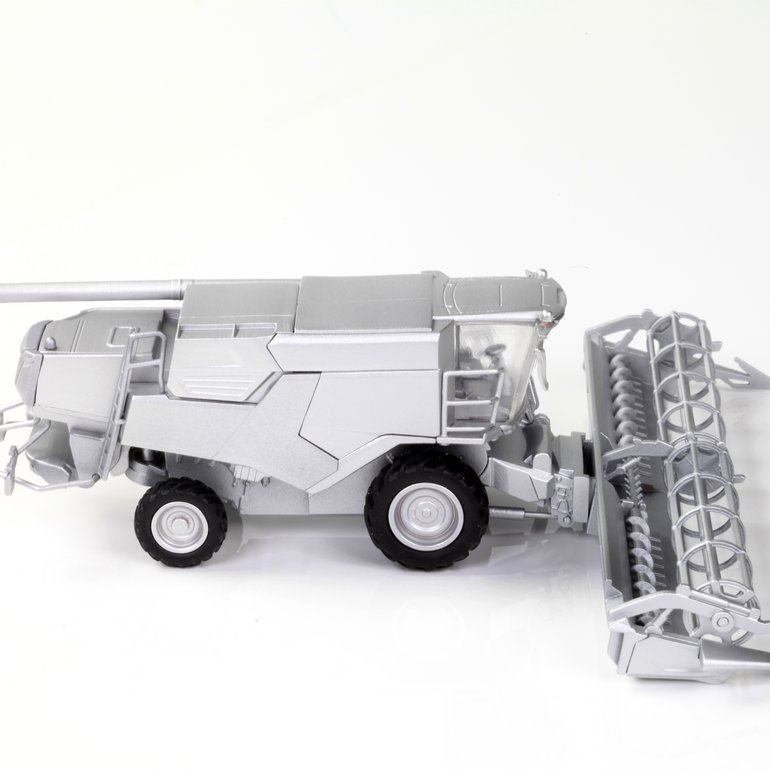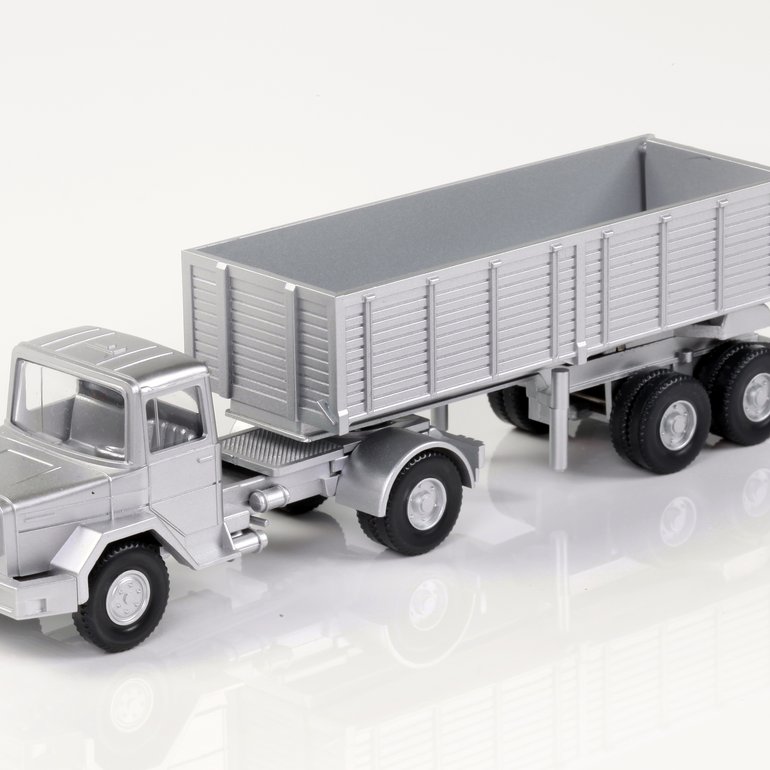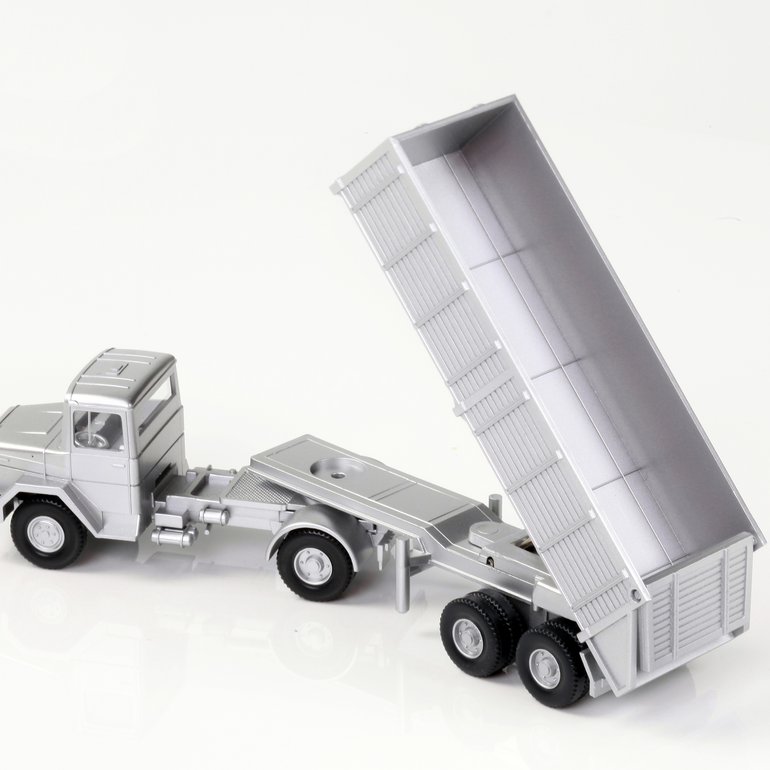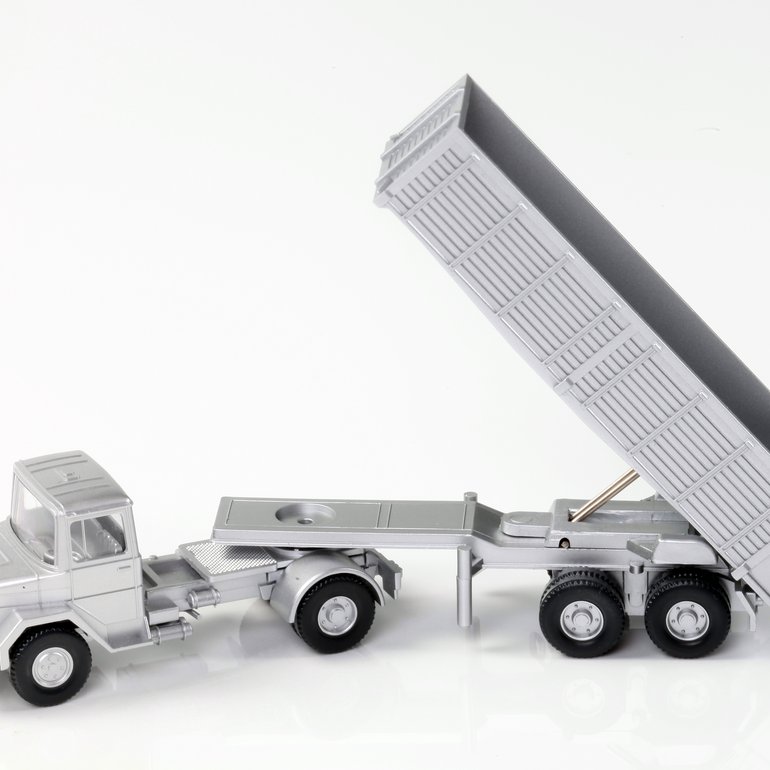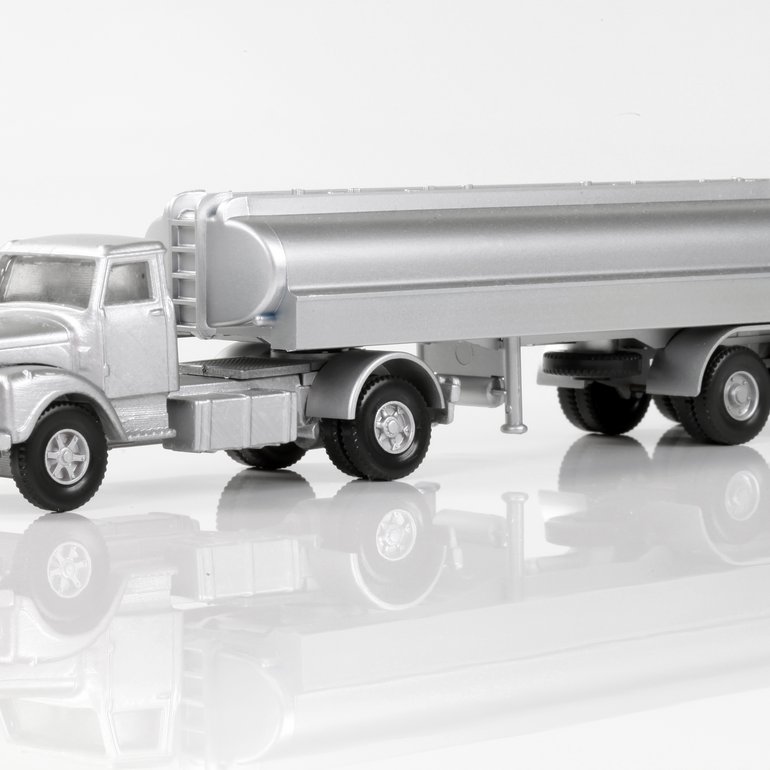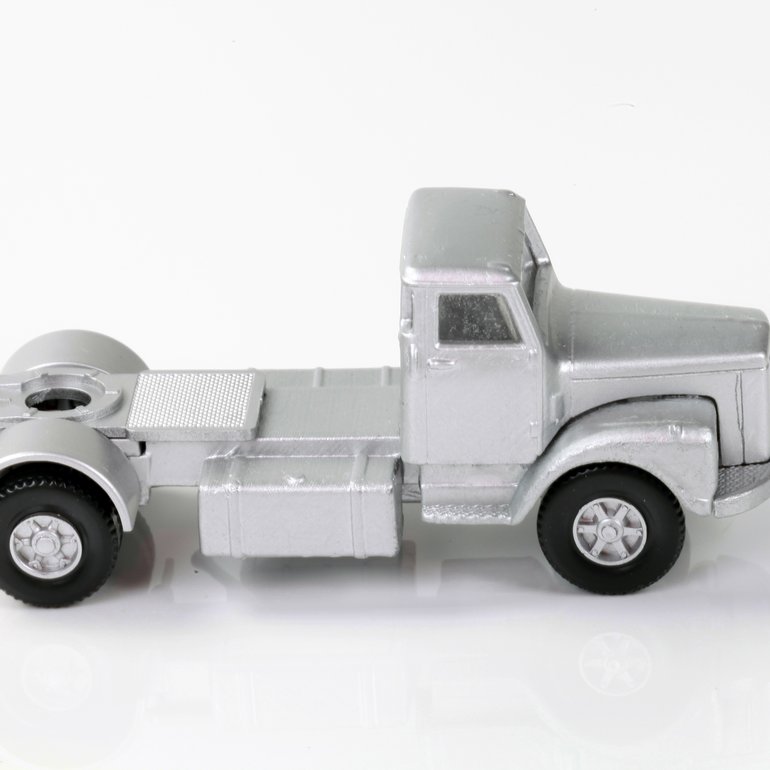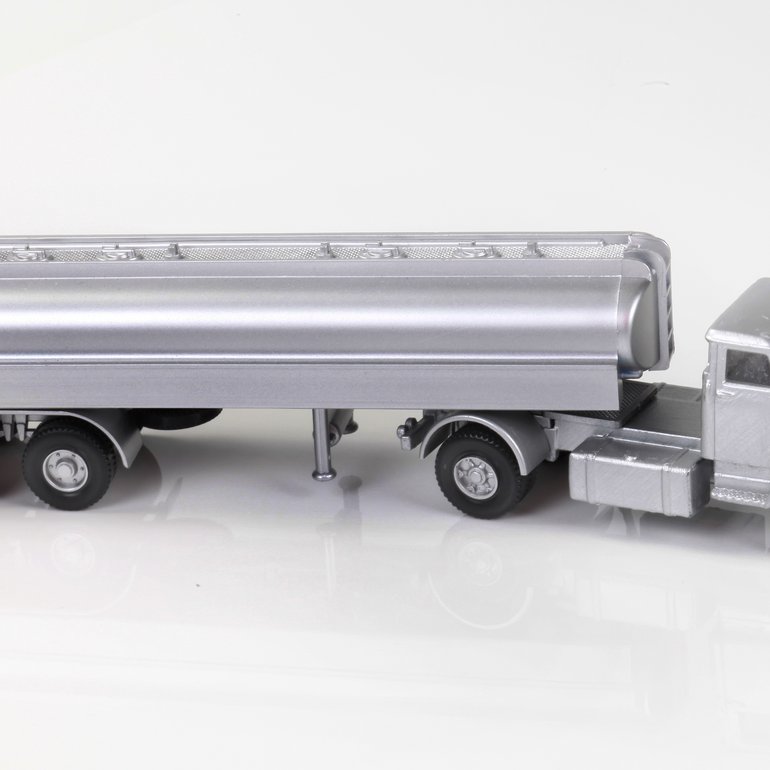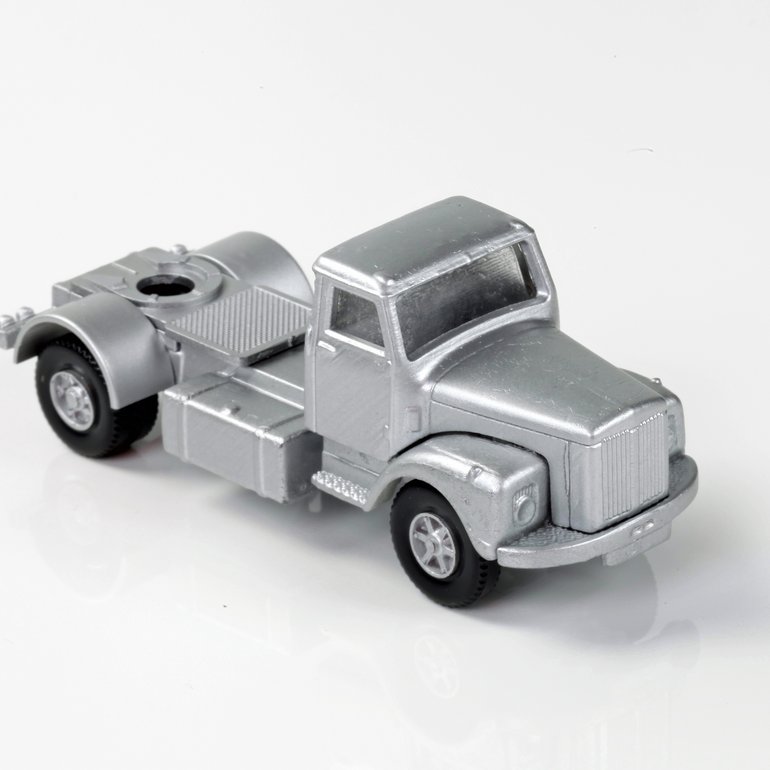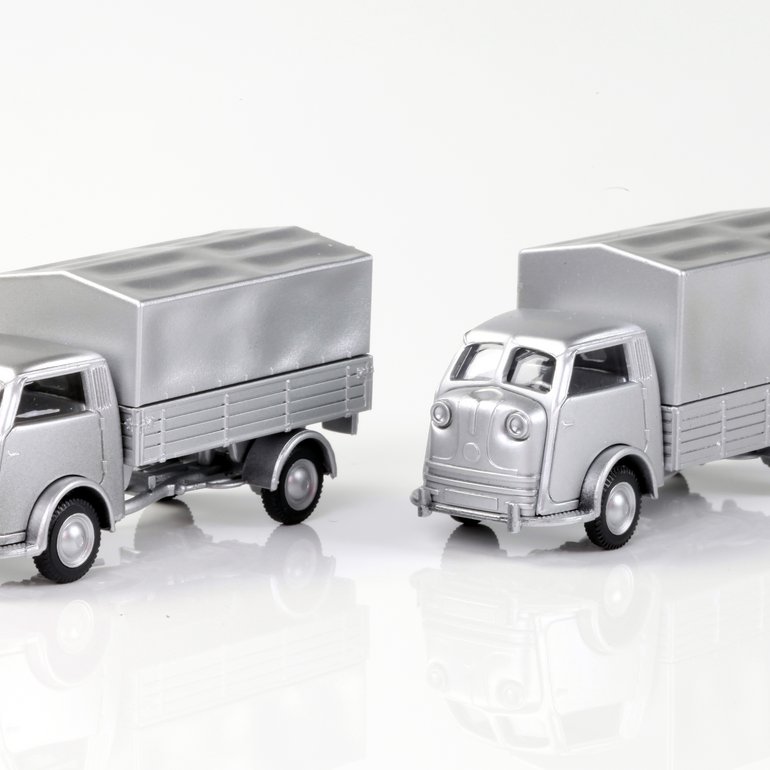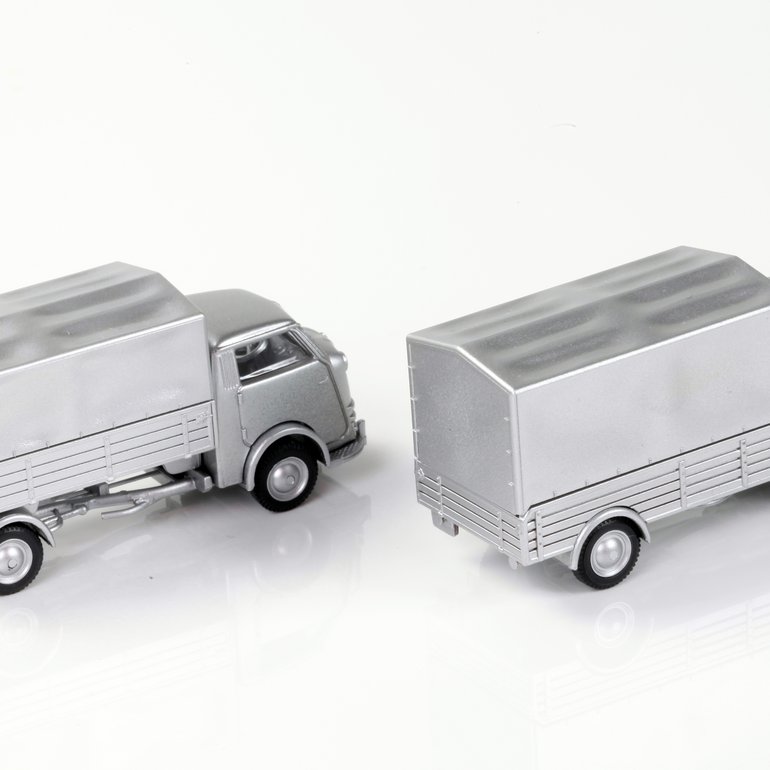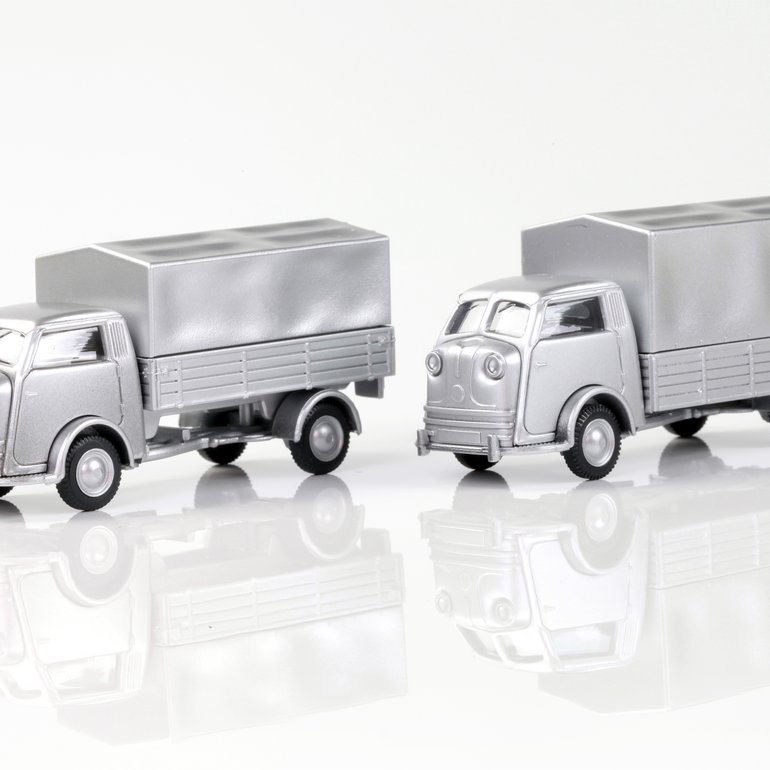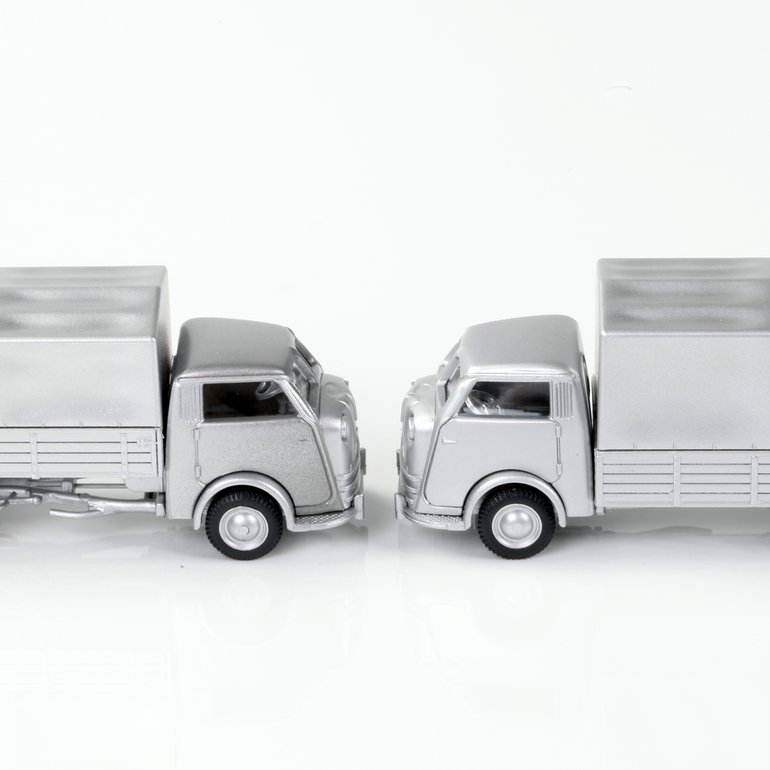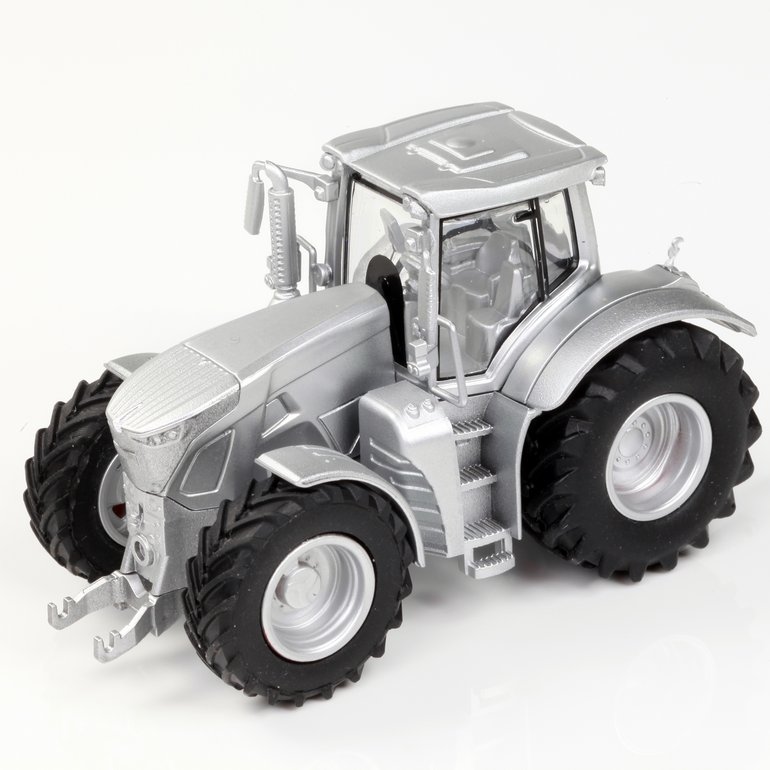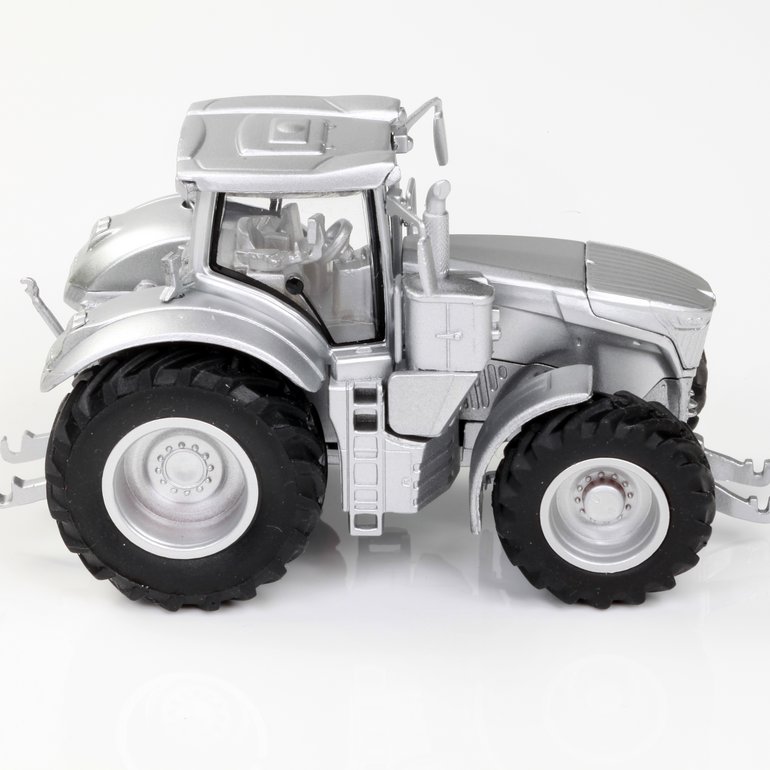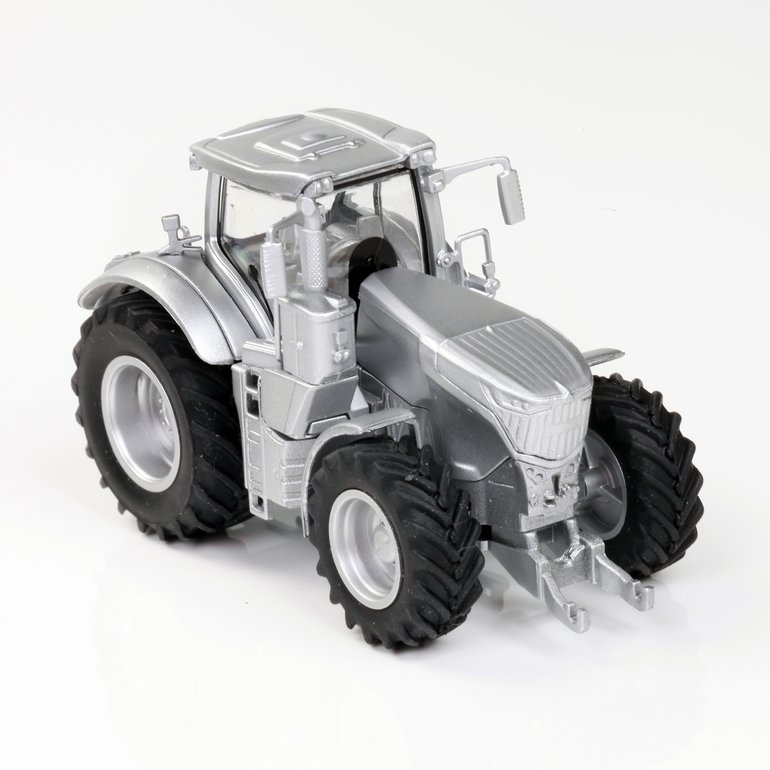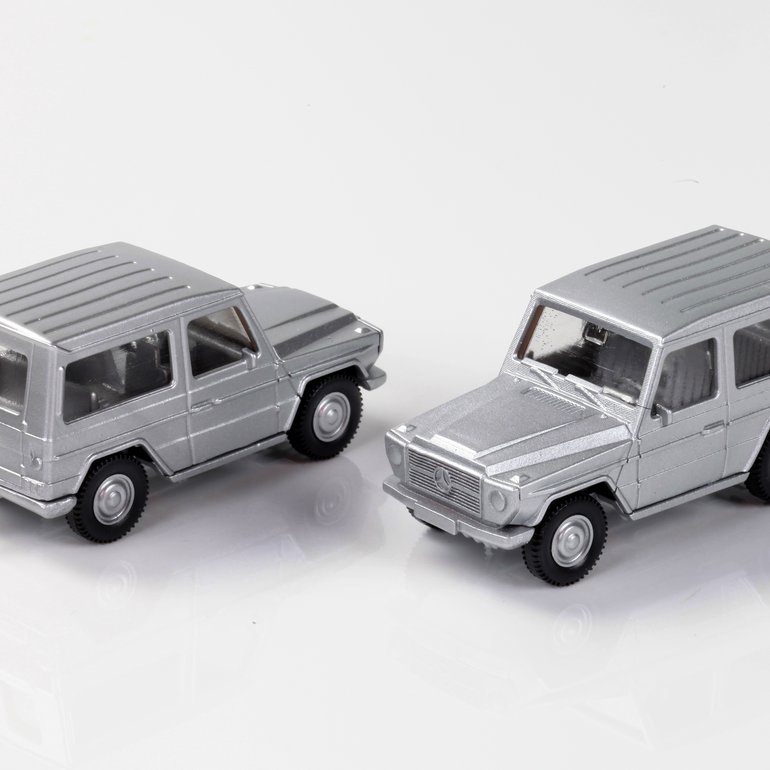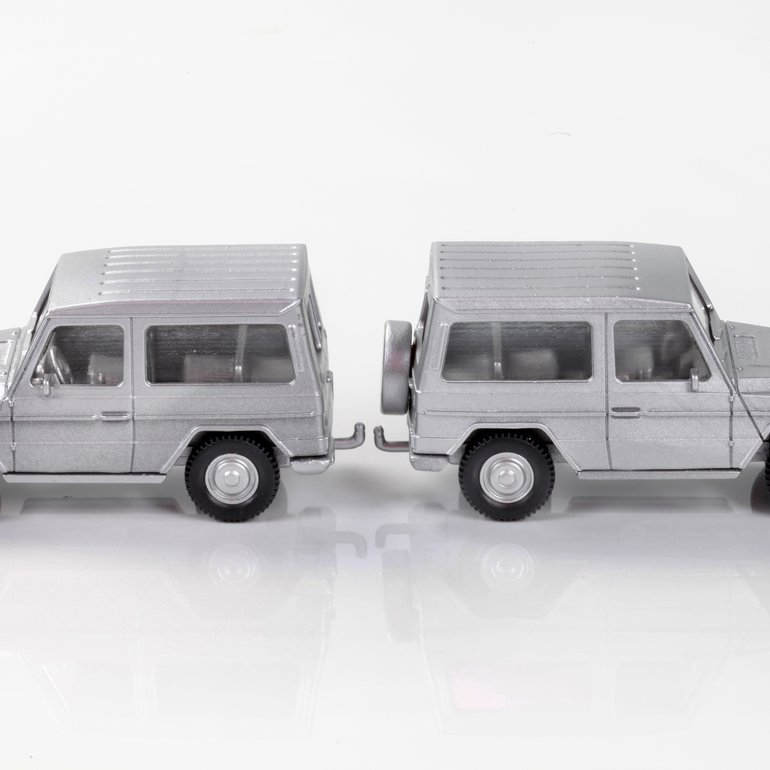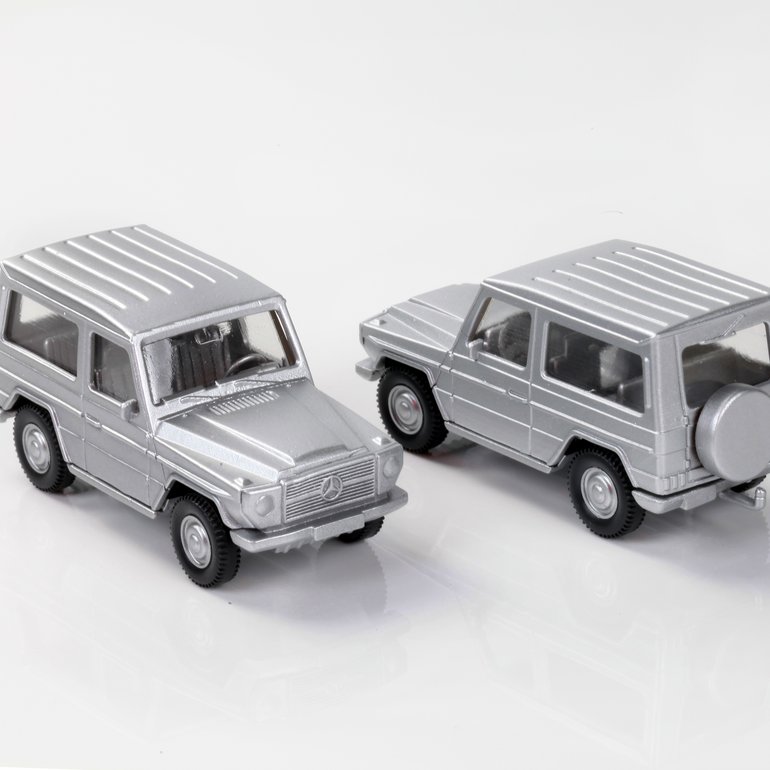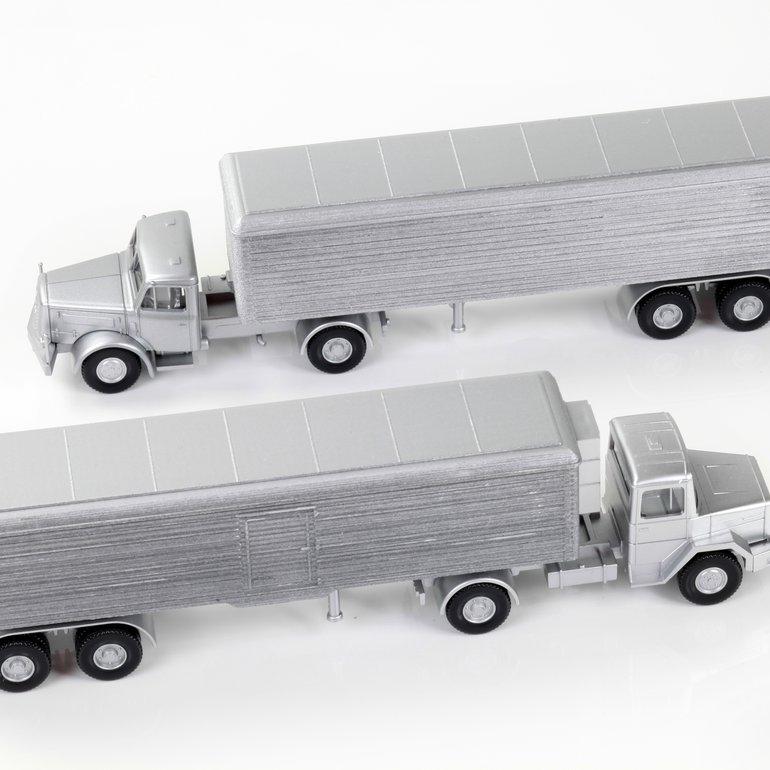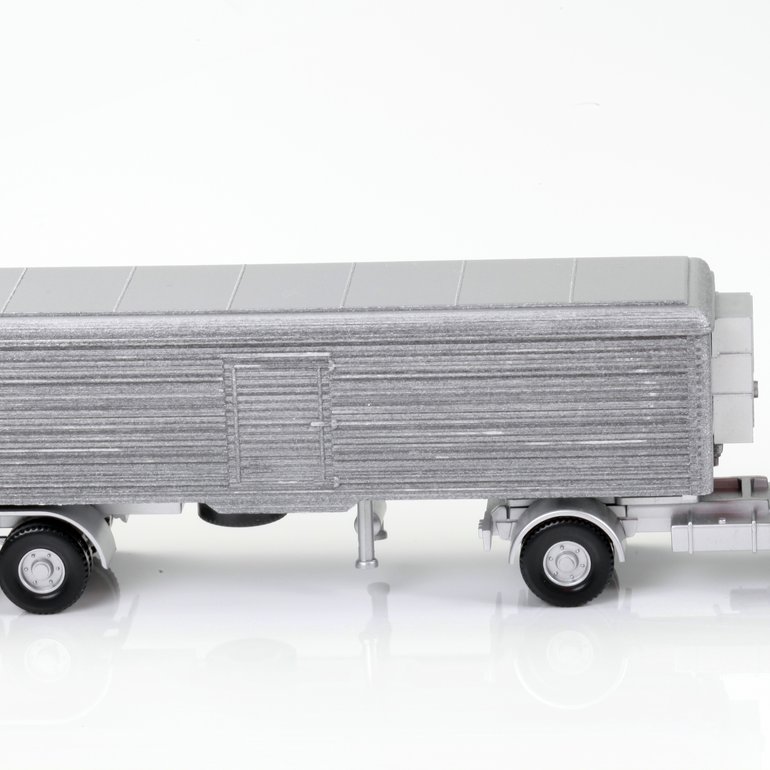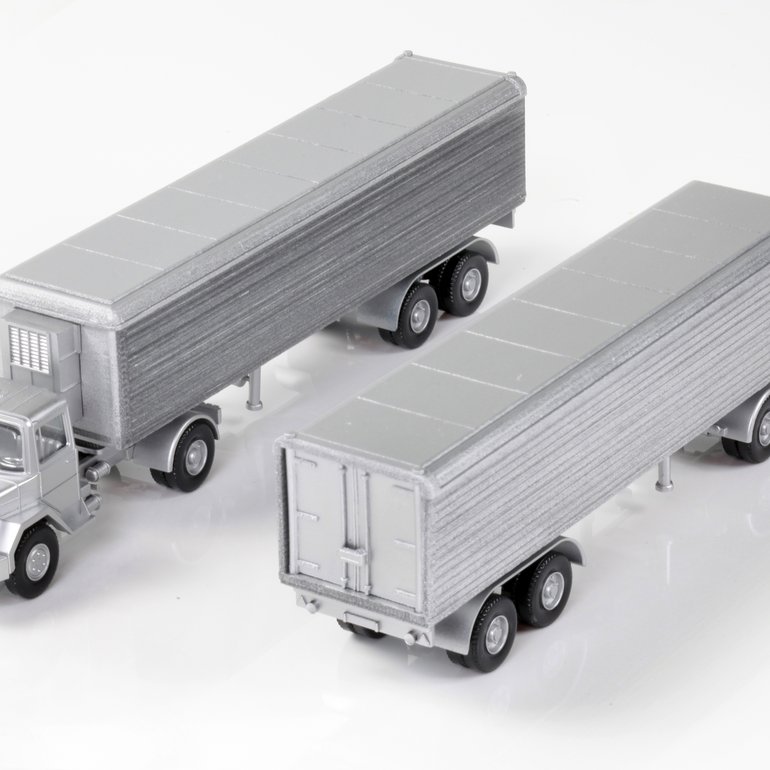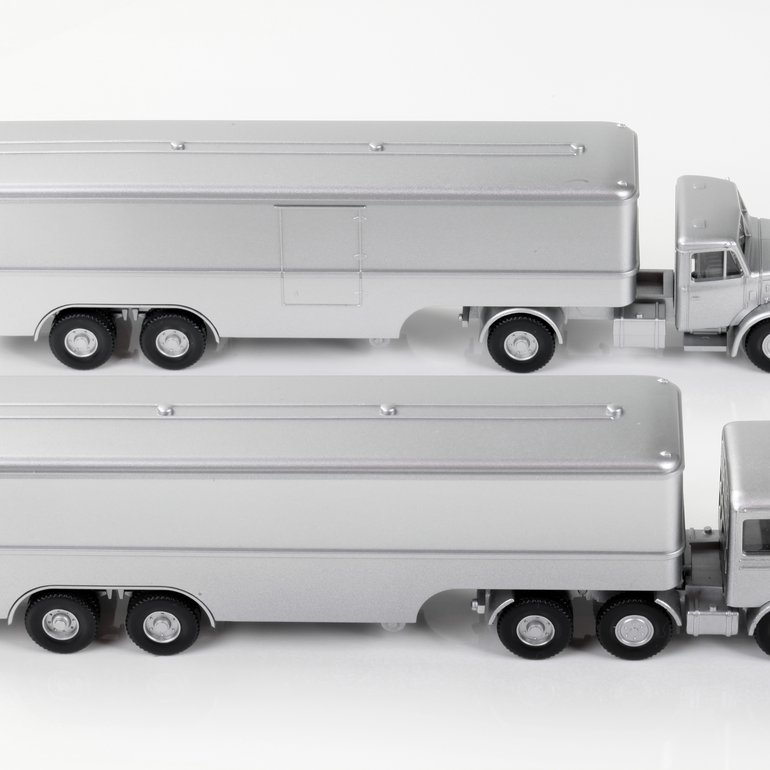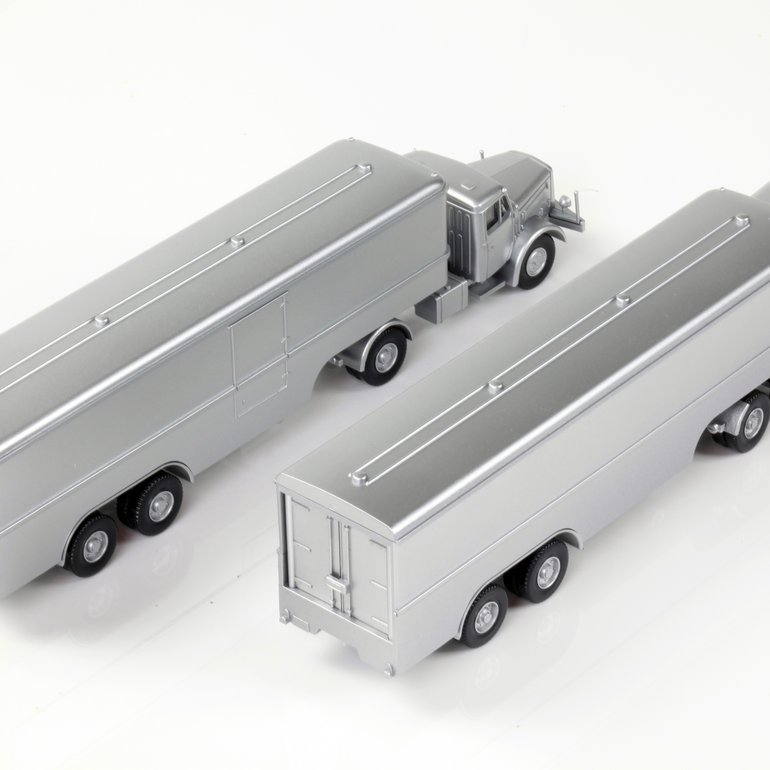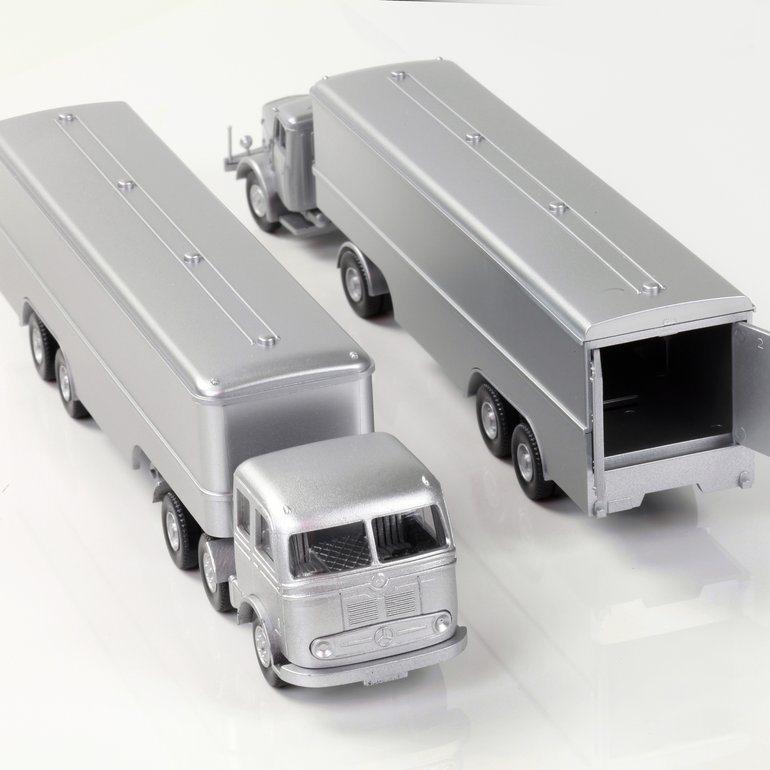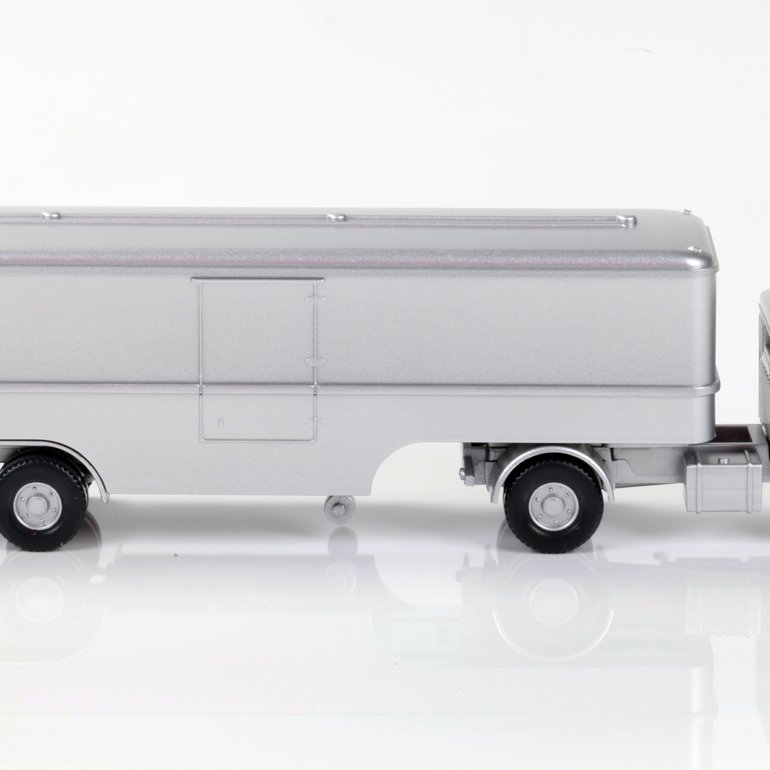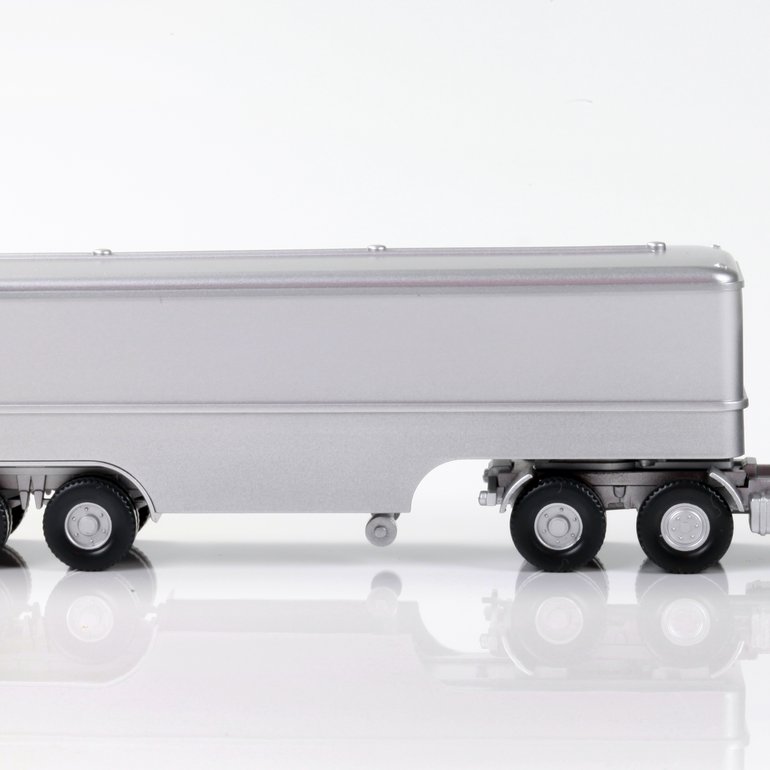- The latest combine harvester generation of the Claas Trion
- The Mercedes-Benz G-Class is unveiled as a short version
- Tempo Matador hits the road with authentic tarps
- New dump semi-trailer for Economic Miracle construction sites
- Historic WIKING semi-trailers shaped from new moulds
Offering exciting updates for the favourite themes of the brand collectors, the 2022 product line-up also creates fresh new momentum. With their new selection, WIKING stays true to their well-established theme variety and the tastes of their collectors. Just as in the years before, the model year 2022 with its attractive new models is the product of careful consideration, giving assurance to 1:87 enthusiasts that their beloved themes will see another continuation. The new models include modern classic versions of the Opel Manta B and the Mercedes-Benz G with a short wheel base along with the Scania L 111 as a tractor unit and stunning semi-trailers of furniture, transport and cooler boxes. In agriculture, WIKING is ringing in the new era of the Claas combine harvester generation with the Claas Trion, while upgrading the Rosenbauer Panther with an extinguishing arm that redefines fire-fighting tactics.
The second Manta generation shows off the model’s sporty side
Manta, Manta – WIKING allows the legendary Manta G to link up with its second generation. Produced between 1975 and 1988, the coupé’s performance ranged from 55 to 110 PS - or, from sedate to sporty. With this addition, WIKING complements the selection with a favoured modern classic that is as popular today as it was back then. Sporting two horizontal cooling air openings, the body forms the harmoniously coherent Manta front that was to become the signature characteristic of this sports coupé. The glazing has been given an engraving of the interior mirror, while the bumpers have been inserted in the chassis. WIKING has designed the unmistakable rectangular headlamps as inserts and used new moulds to craft the interior with separate steering wheel. But, WIKING did not stop there: They also included the puritanical two-spoke steering wheel, which was highly sought-after by Manta B drivers at the time.
Peltzer’s heritage of ideas: Mercedes-Benz G with short wheel base
Even the WIKING founder was anxious to add this off-roader – and now it is finally rolling into the portfolio! Back then, prototype building for the then still fledgling Mercedes-Benz G with short wheel base had already been approved by the WIKING founder when the project became stuck at the planning stage. However, the project was never shelved altogether by the traditional model makers, as they incline towards going back to the roots of their model making history and never give up on the possibility of realisation at a later time. That is exactly what WIKING fans wish for! In 1979, WIKING founder Fritz Peltzer himself had set in motion the project of the Mercedes-Benz G with short wheel base. Now, 43 years later, WIKING collectors can finally complement the long-established long version of the series model with its counterpart. And, they can do so with a model that possesses the same WIKING charm. After all, the small G model is available with the same rear double door or singe-piece tailgate. While the double door version does not come with a spare wheel, the tailgate version of this life-long modern classic can be purchased with or without a spare wheel. Naturally, the traditional model makers thought of special versions of vehicles for such official institutions as fire brigade, police, etc. as early as the mould construction stage – much to the excitement of collectors.
The DKW 1000 S promises authentic open-top fun
A dream car and the embodiment of pleasure – DKW 1000 S convertible was a favourite among aesthetics aficionados. For the first time, WIKING has turned the prototype, which rolled off the belts in Düsseldorf Derendorf between 1958 and 1963, into a convertible. The model sprang from the original moulds that WIKING used only briefly for the enclosed DKW coupé between 1960 and 1964.
More contemporary: Now, there are tarps for the Tempo Matador
Introduced only recently, the Tempo Matador - just as the contemporary 1:87-scale transporters - has already gained a special place in the hearts of WIKING fans. After receiving repeated requests for the tarps which commonly covered the Matador flatbeds in the fifties, WIKING is now accommodating their customers by unveiling tarp versions for the low-side and the high-side flatbed alike. Seemingly reflecting real life, the surfaces are also showing a realistic fall of the folds, augmenting the authenticity of the model even further. The same holds true for the towing eyes, which show the same intricate details both in the open and in the closed versions. The tarp of the high-side flatbed is open at the rear and shows the tarp cover rolled up and fixed in place with four leather straps. The tarp of the low-side flatbed is shown closed at the rear only.
This Scania-Hauber L 111 put its stamp on the company’s history
The Scania L 111 epitomises the bonnet trucks the Swedes used to build into the nineteen eighties. At the time, the company had just dropped the long-standing double name of “Scania-Vabis”. The version of the Swedish tractor unit that WIKING has miniaturised is the last series model - when the hinged windows were already history in the prototype. This allows for a multitude of new combinations that can all be composed closely to the originals. It goes without saying that WIKING attached primary importance to fine engravings again. Driver's cab and bonnet have been furnished with an integrated radiator grille, while the three windows on the rear of the cab all come with a glazed window curvature on the side. The driver's cab sides are equipped with a handle, while the engravings of door handles, body beads and drip rails show a true-to-the-original design. The driver's cab roof can be used for a wide range of functions such as inserting warning lights or roof signs. The fenders have been decked out with a step including longitudinal engravings, while the recessed headlamps are presented with a filigree eyelash engraving. The headlamps have been designed as concave surfaces. WIKING treats the driver's cab to a contemporary dual-axle chassis with a level of style and grace that fits in with the popular WIKING chronology of the modern classic lorries from Sweden.
Furniture box launches from new moulds
WIKING rounds off the theme of furniture box trailers of the nineteen sixties and miniaturises the two-axle model using new moulds, but staying true to the old prototype, creating enticing miniaturised versions that WIKING fans had been wishing to see for a long time. While conceiving this new model, the traditional model makers put model loyalty front and centre and designed a second version in the style of the single-axle trailer of identical construction, which boasts door engravings on the sides - as were common for side loading on many originals. The doors on the rear can be opened, while the roof design is marked by an all-around drip rail. WIKING did not forget to include the position lights on the front of the box, either. The tail lights and the licence plate on the rear have been reproduced with sublime detail.
Box semi-trailer with full-surface horizontal beads now available as a cooler version
Equally shaped from new moulds is the well-known box semi-trailer with horizontal beads. Since the original moulds were converted in the past, it had not been possible to make additional models based on historical prototypes. This is now about to change – and not in one, but in two ways. This is because WIKING has come up with both a full-surface box design and a version with a door that allows for side loading. The attachment of the existing refrigeration unit gives rise to contemporary refrigerated box trailers. The position lights on the front of the semi-trailer easily set apart the new box from its old prototype. When it comes to the new semi-trailers that will be pulled by tractor units ranging from the Mercedes-Benz Pullman to the Henschel HS14/16, collectors can look forward to WIKING’s sought-after contemporary look and feel.
New dump semi-trailer for the construction site of the Economic Miracle era
As construction vehicles are deeply engrained in WIKING’s DNA, the traditional model makers have built a new semi-trailer skip, which was considerably more commonplace thanks to its fine wooden planks in the sixties and seventies than the familiar dump semi-trailer. WIKING has, of course, also made sure to include the metal bar that is needed to tilt up the skip, which earns this 1:87 model the highest marks in reproducing the real-life setting. What is more, the skip panels on the rear are arranged to move freely. These features allow the dump semi-trailer to seamlessly assimilate into the extensive type selection of construction vehicles that WIKING has miniaturised so far – the Economic Miracle has been given yet another 1:87 model face.
The name of the new Claas combine harvester generation is Trion
After 22 years, WIKING is following up the initial launch of a 1:87 combine harvester model in Claas’s Lexion series with a precision miniature of the new Trion. The latest generation of the large harvester from Harsewinkel is intended to conquer the world as its engine output levels ranging from 258 to 435 HP and its grain tank volumes of 8,000 to 12,000 litres signify an entirely new era for Claas. WIKING has miniaturised the real-life sibling both as a wheel version and as a Terra-Trac version. The new generation delivers the specifications that half of the customers on the German market have requested. It goes without saying that WIKING outfits the Claas Trion with the Convio 1080 cutting unit with matching cutting unit trolley, creating a perfect 1:87 harvesting unit.
With the Fendt, it is all about the interior upgrade
The traditional model makers manage to impress - especially in the supreme discipline of the 1:87 scale. In 2022, WIKING will focus on fine-tuning the most cutting-edge tractors. Part of this effort is the overhaul of the Fendt 1050, which became necessary after the distinctive look of the exhaust on the passenger side changed along with the brand image. The facelift has made the tractor from Marktoberdorf even more towering, while the intricate ornamental trim elevates the Fendt 1050 Vario even further. And, there is another detail that bears closer inspection: Customized ergonomically, the arm rest inside the cockpit paints a harmonious picture of the entire interior. The same applies equally to the Fendt 942. The traditional model makers augment this cockpit as well by incorporating the latest stylistic correction made to the prototype: a modified console.
Rosenbauer Panther receives a manoeuvrable extinguishing arm
The fourth generation of the Panther takes on a new meaning of fire-fighting tactics! The new Panther has been furnished with the fully manoeuvrable Rosenbauer extinguishing arm, which allows the real-life brother to intervene with much greater efficiency when things get serious in an aircraft fire. This is made possible by the implemented piercing tool as a nozzle that pierces the aircraft hull to deliver the full monitor throughput. The extinguishing arm bears the name HRET (High Reach Extendible Turret = extinguishing arm). WIKING’s designers have arranged the extinguishing arm to be freely moveable, and both front attachments offer full real-life positioning functionality.


